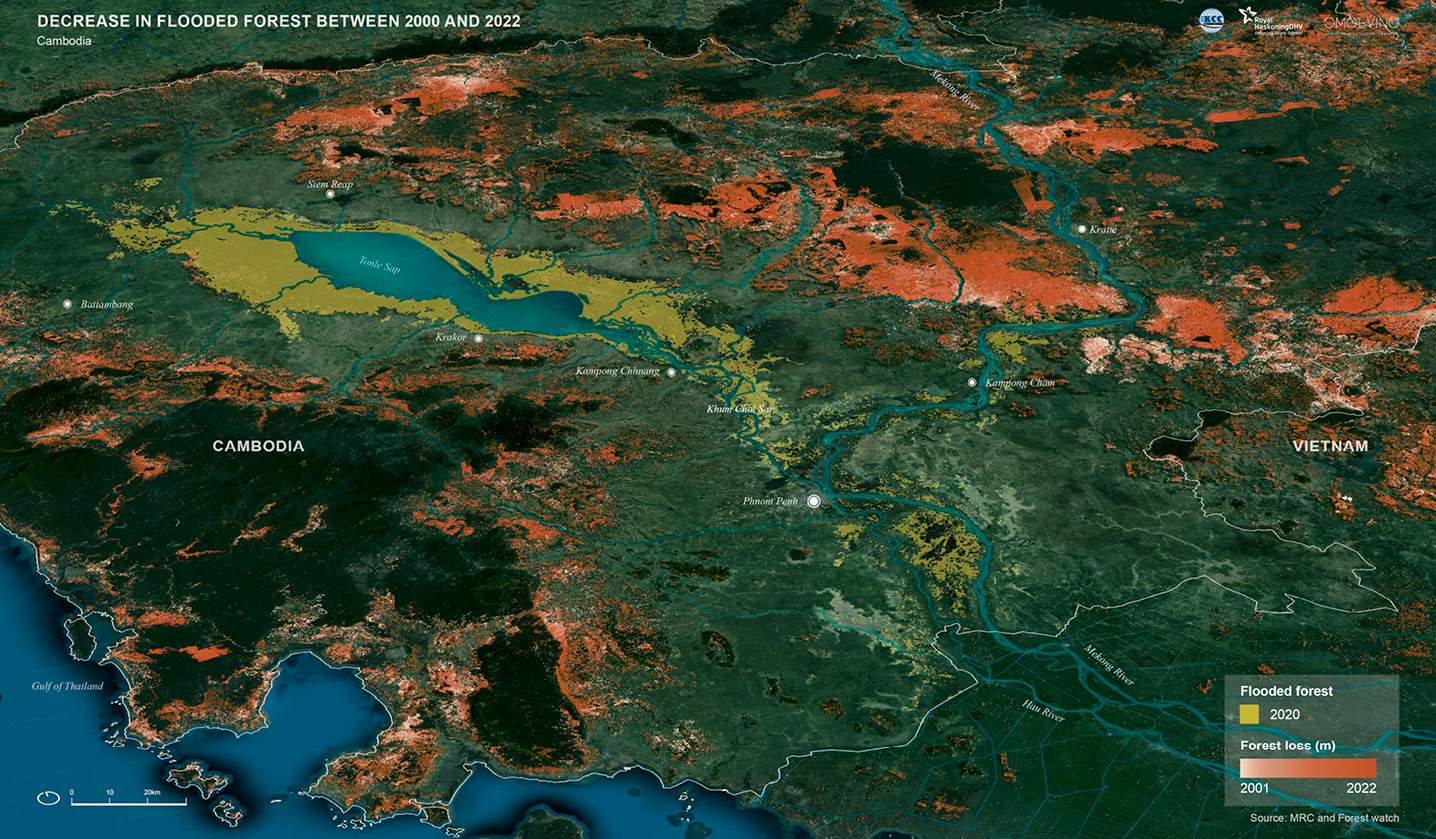Decrease of flooded forest cover in Cambodia
Main Problem
The Mekong Flooded Forest in Cambodia is under threat from the dual impact of climate change and dam development. Reports indicate up to a 40-50% loss of tall trees. These changes have resulted in reduced ecosystem productivity and have disrupted the migratory patterns and spawning areas of fish.
Challenges
-
High-volume dams store water during the monsoon season and release it in the dry season, causing higher water levels during the dry season, which disrupts the natural floodplain's seasonal dry cycle.
-
Unsustainable practices in the community include illegal logging, land encroachment through appropriation of traditional lands, illegal wildlife trade, and unsustainable fishing practices, driven by poverty and weak enforcement.
-
Due to climate change, weather patterns, such as precipitation and monsoon rain intensity, are shifting, potentially altering the timing and volume of floodwaters entering the flooded forest.
Rationale to solve these challenges
-
Adopting effective measures to protect and manage natural resources and ecosystems will enhance the Mekong Flooded Forest's resilience to the impacts of climate change. This measure is expected to provide opportunities for sustainable use.
-
Creating alternative livelihood options to reduce human pressure on using vulnerable (and non-vulnerable) natural resources and ecosystems and to ensure that communities can withstand residual climate change impacts better.
NbS Measures
-
Assessing areas threatened by habitat loss and identifying suitable new areas to compensate for flooded forest losses.
-
Assessing how the local population is now using the flooded forest and whether that contributes to its degradation. If that is the case, alternative livelihoods can/should be found.
How do NbS solve these issues
-
Maintain a specific key area of the flooded forest ecosystem so that it can continue providing essential services for the local community. For instance, many communities nearby rely on natural resources as their main livelihood, which makes them even more susceptible to the impacts of climate change. Supporting a healthy flooded forest ecosystem will ensure a community protein source from capture fisheries, clean water for drinking, protection from floods, and safeguarding lives and property.
-
By adopting a balanced approach to conservation and sustainable resource utilization within the flooded forest, the intervention aims to ensure long-term community benefits, such as food security, water supply and purification, and climate adaptation. Additionally, the forest can serve as a carbon sink, contributing to climate mitigation.
Decrease of forest between 2000 and 2022
